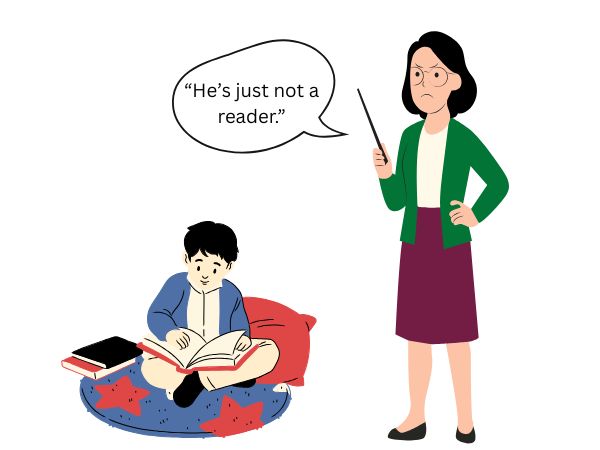When Daniel was seven, he struggled with reading. Every time the class opened their books, he froze. The letters seemed to dance on the page, and while his classmates read smoothly, Daniel stumbled. One day, a teacher sighed and whispered, “He’s just not a reader.”

That label clung to him like a shadow. Daniel stopped raising his hand, stopped trying, and each mistake seemed to prove the label right. His classmates, too, began to notice. Soon, Daniel believed it himself: “I’m not smart.”
But neuroscience tells us another story.
🧠 The Brain is Built to Grow
Research on neuroplasticity shows that the brain is constantly rewiring itself, forming new neural connections with practice and experience (Doidge, 2007). A child who struggles at age seven is not “locked in” to that struggle forever. Their circuits for reading, math, or problem-solving may simply need more time, targeted practice, and encouragement to strengthen.
🌟 The Power of “Yet”
Psychologist Carol Dweck’s growth mindset research demonstrates that when children believe their abilities can grow with effort, they perform better academically (Dweck, 2006). The simple phrase, “You can’t do it yet,” shifts the focus from fixed ability to potential growth. A label like “bad reader” closes the door; a belief in growth keeps it open.
⚡ The Self-Fulfilling Prophecy
Education research also warns us about the Pygmalion effect: teacher expectations can significantly shape student outcomes (Rosenthal & Jacobson, 1968). When a child is labeled, teachers may—often unconsciously—lower their expectations. Students pick up on these signals, which can limit their motivation and achievement.
🌱 Daniel’s Second Chance
Months later, a new teacher arrived. She refused to see Daniel as “the struggling reader.” Instead, she gave him shorter texts, celebrated small successes, and told him, “Your brain is learning every time you try.” Slowly, Daniel began to read aloud. Each attempt strengthened the pathways in his brain. By the end of the year, he was reading stories on his own.
What changed? Not Daniel’s potential. What changed was the belief that he could grow—and the teaching strategies that nurtured his brain’s natural ability to adapt.
💡 The Takeaway for Educators
Avoid quick labels; they can harm self-belief and restrict opportunity.
Teach students about neuroplasticity so they understand their brains are capable of growth.
Use growth mindset language: emphasize effort, strategies, and persistence.
Provide scaffolded practice to strengthen weak circuits, instead of lowering expectations.
Every child deserves the chance to grow their circuits.
Every child deserves to be seen, not labeled.
Because behind every struggling student is a brain still writing its story. And sometimes, all it needs is one teacher who refuses to end the story too soon.
🔎 References
Doidge, N. (2007). The Brain That Changes Itself. Viking Press.
Dweck, C. S. (2006). Mindset: The New Psychology of Success. Random House.
Rosenthal, R., & Jacobson, L. (1968). Pygmalion in the Classroom. Holt, Rinehart & Winston.
